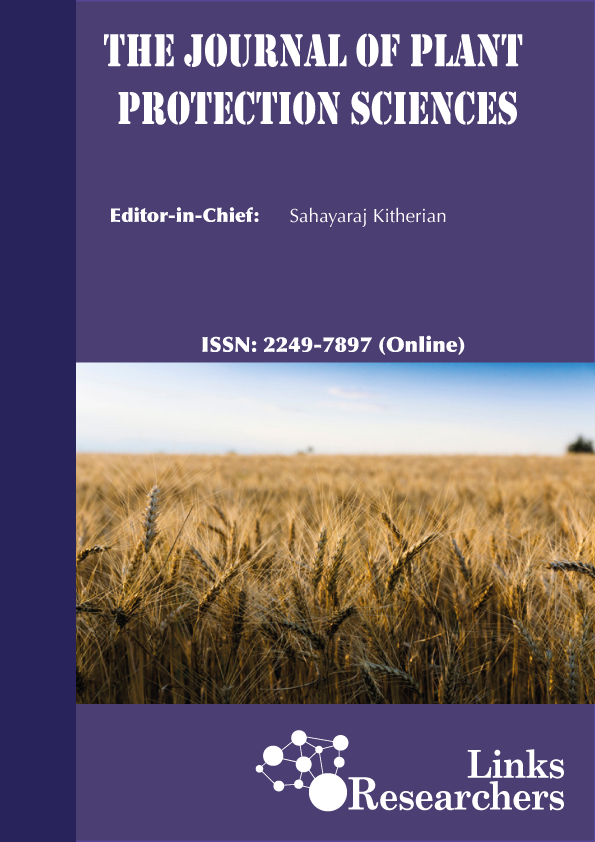Sana Irshad Khan1*, Zafar Iqbal2, Hamid Ullah Shah2 and Shaukat Hussain3
1Bikash Ranjan Ray and 2Mrinal Kanti Dasgupta
A. K. Chaubey and Satyandra Kumar
Dhananjoy Mandal
...
Partha Pratim Ghosh and 2N. C. Mandal
Jawad Anwar* and Zafar Iqbal
Zulqarnain and Zafar Iqbal*
Syed Atif Hasan Naqvi1*, Sidra Mushtaq1, Muhammad Tariq Malik2, Ummad-ud-Din Umar1, Ateeq ur Rehman1, Shoaib Fareed3, Muhammad Asif Zulfiqar4
Muhammad Usman Ghazanfar, Muhammad Imran Hamid, Mubashar Raza, Waqas Raza*, Misbah Iqbal Qamar
Muhammad Jawad1*, Shahid Riaz Malik1, Rana Muhammad Atif2, Haris Ahmed2 and Muhammad Shahzad Afzal3
Muhammad Junaid*, Musharaf Ahmad and Saifullah
Maryam Yousaf1, Salman Ahmad1*, Romana Anjum2 and Muhammad Zeeshan Majeed3
Manal A. El-Shazly1. M. I .Kobeasy2and Sarah H . Altalhi3
Hongqun Li1,*, Liganag Xing1, Xiaoli Liu2, Yonglan Pu3, Yuqing Yang3 and Yongyao Fu1
Teguh Wahyono1,2*, Wahidin Teguh Sasongko3, Wijaya Murti Indriatama4, Setiawan Martono5, Slamet Widodo3, Widhi Kurniawan6, Muhamad Nasir Rofiq7
Khalid Hussain1, Muhammad Younas1*, Niaz Hussain1, Abdul Ghaffar1, Muhammad Raheel2, Anees Akhtar3, Muhammad Irshad1, Munir Abbas1 and Farah Shabir4
A. Beyan1, A. Seid†2 and H. Shifa1
S. Ahmed†, A. Munir, S. Asad and A. Muhammad
A.W. Amin, Abd-El Wanis, Mona, A. Rahman and Tomader
Hayam S. Abdelkader1; Gamalat M. Allam1; T. A. Moustafa2; and M. El-Hanunady2
Fariha Qahar and Muhammad Sayyar Khan*
Manal A. El-Shazly1, A. s. 2 Abdel Wahab and Salwa N. Zein3
S.Y.M. Mahmoud1 and M. Hashem2
M. Osman1, Kh. El-Dougdoug2, E. T. Abd El-Salam3, R.M. Taha4 and R.M. El-Hamidl
Muhammad Nadeem1, Muhammad Naveed2,3*, Muhammad Shafiq2, Irfan Rasool2 and Muhammad Afzal Zahid2
Featuring
-
Comparative Effectiveness of Some Novel Fungicides Against Soil-Borne Pathogens of Chili
Nabeel Akhtar, Owais Iqbal, Imtiaz Ahmed Nizamani, Rehana Naz Syed and Abdul Mubeen Lodhi
Sarhad Journal of Agriculture, Vol.40, Iss. 2, Pages 470-482
-
Faunal and Habitat Distribution of Mosquitoes (Diptera: Culicidae) in Chakwal, Punjab, Pakistan
Arif Mehmood, Muhammad Naeem, Abu Bakkar Muhammad Raza, Muhammad Zeeshan Majeed, Muhammad Irfan Ullah, Muhammad Asam Riaz, Ikram ul Haq and Waqas Raza
Sarhad Journal of Agriculture, Vol.40, Iss. 2, Pages 463-469
-
Technical Efficiency of Wheat Farms Under Irrigated Conditions in Central Sindh, Pakistan
Akbar Khan Khajjak, Adnan Nazir, Tehmina Mangan and Ali Raza
Sarhad Journal of Agriculture, Vol.40, Iss. 2, Pages 454-462
-
Allocative Efficiency of Tobacco Production in District Mardan, Pakistan
Khurram Nawaz Saddozai, Muhammad Nasrullah, Jahangir Khan, Syed Attaullah Shah, Raheel Saqib, Naheed Zahra and Mansoor Rasheed
Sarhad Journal of Agriculture, Vol.40, Iss. 2, Pages 448-453
Subscribe Today
Receive free updates on new articles, opportunities and benefits

© 2024 ResearchersLinks. All rights Reserved. ResearchersLinks is a member of CrossRef, CrossMark, iThenticate.







